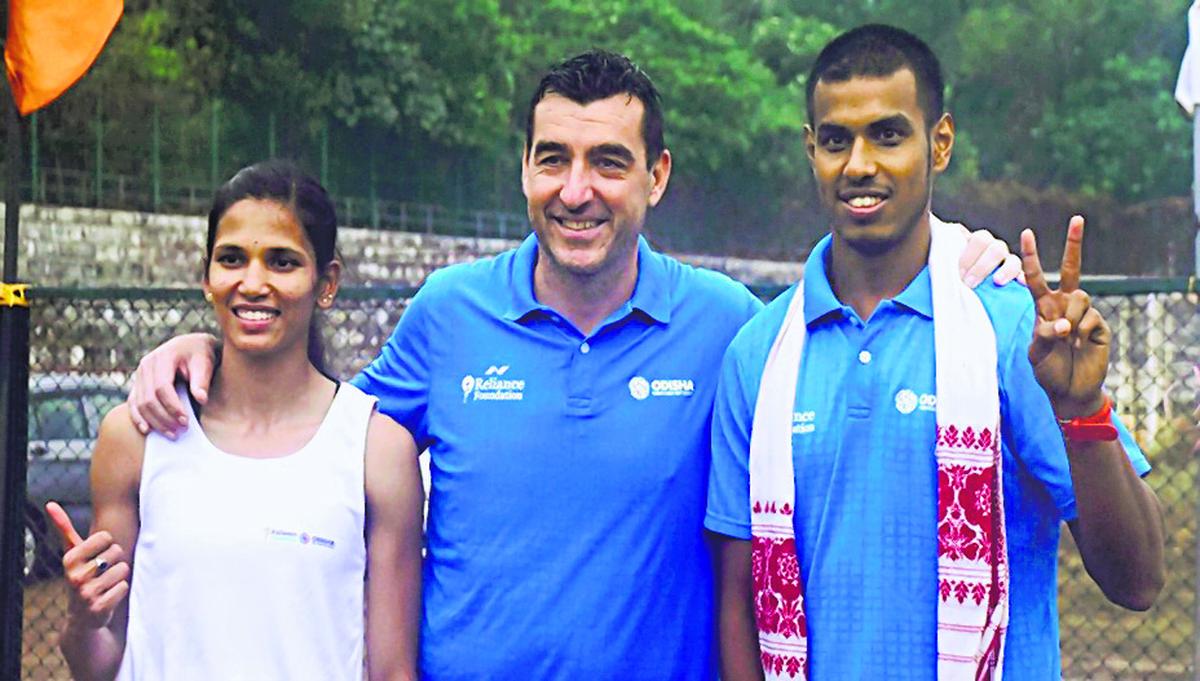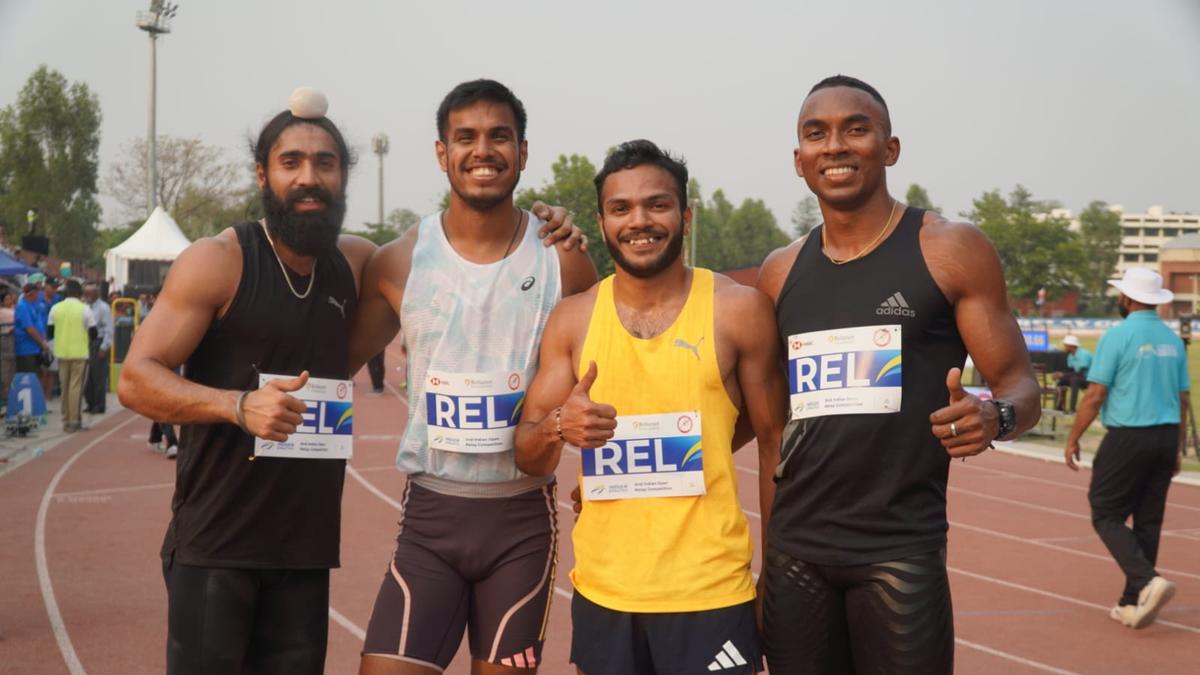Gurindervir, Animesh, Manikanta, Amlan’s 4x100m national record will be broken multiple times this season: James Hillier
In a little over the course of a month, three Indian National sprint records have been rewritten in the record books.
On March 28, Gurindervir Singh broke the Indian 100m record. Animesh Kujur then shattered the 200m record at the Federation Cup on April 24. On Wednesday, at the Sector 7 stadium in Chandigarh, it was the turn of the Indian 4x100m record, set in 2010 — it was the oldest standing Indian men’s track record — to fall.
Amlan Borgohain, Manikanta Hoblidar, Animesh Kujur and Gurindervir Singh, representing Reliance Sports Foundation, stormed to victory in the Indian National Relay Competition in a time of 38.69, slashing 2/10ths of a second off the previous mark of 38.89 set by the Indian team at the 2010 Commonwealth Games.
All records might have fallen to athletes training with Reliance Sports Foundation coaches — Animesh trains with Martin Owens in Odisha, while the other three train with athletics director James Hillier in Mumbai — but Hillier says the relay mark might be the one that’s most satisfying. “I think the 4x100m record is a hugely symbolic one. It’s one thing to get records in individual events like the 100m and 200m. But to get it in a relay means you have four runners who are really good and running at the same time with great chemistry,” he says.
For Hillier, who has been working in India since 2019, the relay record is proof that his program is starting to deliver results. “I’ve been talking about India having a sprint revolution for a while now, but you have to back these words with actions and results. Now we are seeing results. We had broken the 100-200m records, and now we have the 4x100m record. I think the momentum we are developing is massive. I think people are going to start having to take notice of Indian sprinting now,” he says.
Much of the credit Hillier gives for the team’s success is the fact that there is a group of high-quality sprinters training at the same base in Mumbai and constantly driving each other in both the training hall and competition. Indeed, the 100m record that Gurindervir broke belonged to Manikanta, while the 200m record, now in the name of Animesh, was once held by Amlan. “Everyone is just constantly pushing each other,” says Hillier.
According to Hillier, the fact that all three records have come as early in the season as they have suggests that the timings will only improve as his athletes prepare for bigger competitions in the season. The relay team, in particular, hadn’t even trained a complete relay session together. “We aren’t anywhere near our best. We have been running constantly in the past few weeks. We only had one relay practice before this race (in Chandigarh). Gurindervir wasn’t even part of that because he was competing in Iran. This is the first race we have run and we ended up breaking the national record by 2/10ths of a second, which is massive in sprint events,” he says.
The team could have broken the record twice over. Despite running conservatively in the morning heat on the advice of their coach, they finished 0.04 seconds faster than the old record. “Because we were running for the first time, I told them to run hard but to keep the baton exchanges nice and safe. I wanted them to have a sensible race so that they could build their confidence. And when we saw that we nearly got the record in the morning’s race, we had the belief we could get it in the final,” says Hillier.
Hillier says the team identified simple areas to improve on after the heats, and that gave them an improvement of 2/10ths of a second in the final.
Target Asian medal
The fact that such a dramatic improvement of the record was possible after just minor tweaks in a squad that was running together for the first time means the quartet can get even faster. “They could have run even faster. There are loads of areas they can improve. These boys can be looking at running in the low-38 seconds and potentially even in the 37-second range. There is a huge room for improvement,” says Hillier.
While anything in the low-38-second range will take time to accomplish, there are milestones that are well within reach. A time of 38.69 seconds would have been enough to place on the podium at any Asian Games (bronze at the 2022 edition went to South Korea with a time of 38.74), potentially putting the Indian squad in sight of their first medal in the event since the 1970 Asian Games over half-a-century ago.
The first step towards that goal will come at the Asian Championships in May.

James Hillier poses with Amlan Borgohain (right) and Jyothi Yarraji.
| Photo Credit:
Special Arrangement
James Hillier poses with Amlan Borgohain (right) and Jyothi Yarraji.
| Photo Credit:
Special Arrangement
“When we go to the Asian Championships, I think we have a realistic chance of winning a medal in the relay. I don’t think anyone would have believed that was a possibility even last year. I don’t want to put the team under any pressure but it is a clear possibility,” says Hillier.
Anything like the time they ran in Chandigarh should mean Hillier’s squad returns with a medal. But Hillier wouldn’t want his boys to think beyond that. He’s already told them he expects better timings. “I told them to enjoy this moment but that it’s only the start for us,” he says.
As his athletes run more and more races this year, Hillier expects their timings to get better not only in the relay but also in the sprints. “I think we have a very high window for improvement in the 100m and the relay in particular. In the short term, we will be looking to improve in the relay. We have four weeks until the Asian Championships and we will be working on our exchanges to make things really sharp by then. But, I think we will be improving in all our sprint results this year. These records that we are setting will be broken multiple times this season,” he says.



